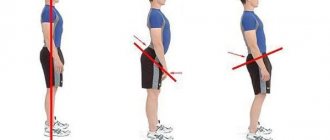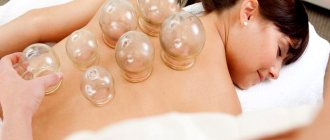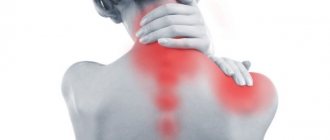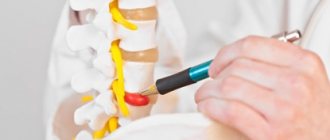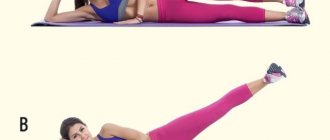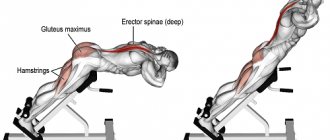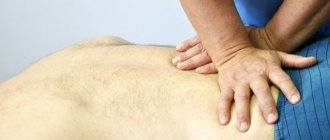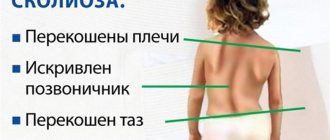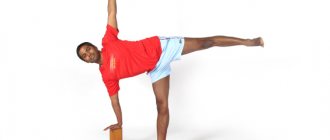The benefits of exercise therapy for the musculoskeletal system of children
The process of formation of the musculoskeletal corset of the spine is primarily determined by the state of the child’s entire muscular system, the task of which is to effectively maintain the spinal column in its natural position.
Systematic exercise therapy helps to harden the child’s body, developing its muscles, the strengthening of which will help keep the spine in a physiologically correct position.
The benefits of physical therapy for a child are as follows::
- general healing and general strengthening effect, normalization of the activity of all body systems, increased immunity, stabilization of the nervous system;
- activation of metabolic processes;
- improving motor skills and coordination, increasing overall physical endurance;
- strengthening the muscles of the back, abs, torso (muscle corset), muscles of the arms, legs and neck in general;
- eliminating the imbalance that occurs when the formation and stretching of ligaments and muscles is not sufficiently uniform;
- relieving increased load on the spinal column;
- correction of posture, prevention of curvatures (scoliosis, kyphosis, lordosis).
Exercise therapy is very important for children, as it strengthens the deep back muscles, and this prevents spinal curvature
Exercise therapy from a very early age will require patience and perseverance from parents, but its importance cannot be overestimated in relation to the prevention of back problems that inevitably appear in a child during school.
Final exercises
When conducting physical therapy, the final exercises are mandatory. They help restore breathing and pulse, and help relax all muscle groups.
How are the finishing exercises performed?
There is a standard set of techniques for this:
various shaking of arms and legs, rotational movements, stroking muscles, gentle rubbing, patting.
What can't you do?
It is forbidden to suddenly stop classes, constantly be distracted from doing exercises, switch to games, etc. This does not contribute to the development of the habit of discipline. Also, with this approach, there is a high level of risk of injury to muscles that are already warmed up and prepared for further sports loads. The training rules must be strictly followed!
At the end of classes, it is recommended to reduce the pace of exercise. The body must “understand” that the complex is ending. If everything is done correctly, the child’s mood will improve and he will feel a surge of strength, energy, and vigor. Ideally, immediately after intense exercise you should proceed to water procedures.
Indications for exercise therapy classes
If the habit of performing a set of special physical exercises to strengthen the back has not been instilled in the child since childhood, then during school years, due to a sharp increase in the load on the spine, with careful observation of the student’s behavior, parents may notice a number of signs indicating the need for prevention.
Signs of incipient problems with the development of the spine include:
- fast fatiguability;
- clumsiness and awkwardness of movements;
- child’s refusal to play outdoor games;
- complaints of headaches and soreness at the neck level;
- pain in the limbs that appears after walking;
- sitting pose with emphasis on hands;
- difficulties during a long stay in one position;
- characteristic crunching of joints heard during movements.
Parents who notice at least one or several of these symptoms should contact a specialist as soon as possible. Only a doctor can choose the right medications and prescribe the procedures necessary to correct emerging posture disorders. .
In addition, exercises to strengthen the spine are prescribed to children with the following indications::
- general developmental delay;
- scoliosis;
- rickets;
- hip dysplasia;
- displacement of vertebral discs;
- flat feet;
- clubfoot;
- curvature of the neck.
Learn more about back problems in children and their treatments:
- You can read about the prevention and treatment of scoliosis in children here
- Features of performing massage for scoliosis in children
- Exercises for scoliosis for children
- You can find out when and how hyperkyphosis forms in children on the page
Important information. How to straighten your back correctly
Gymnastics for children should not cause harm. If there are any spinal deformities (regardless of the degree of their manifestation), it is prohibited:
- perform strength exercises;
- lift heavy sports equipment;
- make sharp turns;
- twist and turn over quickly;
- allow uneven load on the back;
- bend too much in the lumbar and chest areas;
- practice acrobatics;
- run fast and/or for a long time;
- perform jumps;
- compete for speed (for any exercises).
You need to straighten your back carefully, only under the supervision of a trainer or parents!
Exercises to strengthen the back in children
Depending on the child’s age, his emotional state and other physiological indicators, the doctor determines the duration of physical therapy sessions aimed at strengthening the spinal column.
On average, the duration of exercise is determined as follows::
- infants up to six months will benefit from exercises performed from 10 to 20 minutes a day;
- Babies from 6 to 12 months will benefit from daily thirty-minute exercises;
- Children from one to three years old can exercise up to 30-40 minutes daily.
Infants need to be introduced to physical activity gradually, because their spinal column is not yet fully formed
It is best that the first lesson is conducted by a professional massage therapist who can show parents the correct technique.
Therapeutic and strengthening exercises for the back muscles should be carried out with a certain frequency. You should start exercising 3 times a week . If the child reacts positively to the loads, their frequency can be increased to daily training.
In terms of technique, it is important to remember that any workout should begin with a warm-up. It should be followed by a basic set of exercises, necessarily including light stretching. During training, you need to avoid the same type of exercises.
You should also exclude exercises that cause pain and discomfort in the child. Physical therapy exercises, like any other sport, are most beneficial when carried out 50-60 minutes before or after a meal.
During physical exercise for therapeutic purposes, a number of simple but mandatory rules :
- A set of special exercises should be developed by the attending physician strictly according to individual indicators based on preliminary diagnosis. The recommendations given by the specialist regarding the technique of performing the exercises must be strictly followed. During physical therapy exercises, carefully monitor the child’s posture; in this case, the position of the back should be as close as possible to the physiological position.
- Physical therapy classes should be conducted in an office with special equipment. This can be either a clinic or home setting. It is important that the child always performs exercises under adult supervision.
- At the beginning of regular physical therapy classes, the child, together with one or both parents, must undergo training in the appropriate clinic room.
- Each lesson should begin with a massage and warm-up.
- The entire exercise should be performed at a slow pace, excluding sudden movements, jumps or jerks. It is not permissible to include elements of acrobatics.
- An important rule is the contraindication of increased physical activity using weights, including barbells, weights, dumbbells, if there are existing postural disorders.
- During exercise, the sensation of any, even the slightest pain should be excluded.
- Special rotational exercises or stretching of the spinal column are also not recommended for training. Only passive stretching is permissible, in which there is always support under the feet.
- The increase in loads should occur slowly and gradually, from simple to complex elements, avoiding forcing.
- When compiling a set of exercises, it should be possible to alternate the load for different muscle groups and include breathing exercises after physical training.
Video: “How to strengthen a child’s back muscles on a gymnastic ball?”
Preparation and warming up
Did you know that...
Next fact
Beginning physical therapy exercises should include the following::
- stroking;
- rubbing;
- kneading muscles;
- vibrations.
In this case, special attention must be paid to preparing the child for the procedure.
The child’s health should be good, his mood should be normal and balanced, he should feel cheerful and rested. Before starting training, the room should be well ventilated. The most optimal temperature for exercise is 18-22 degrees.
Children usually benefit from warming up their muscles with a massage or taking a warm shower before starting exercise. Classes must be held regularly at the same hours. When conducting training, it is worth playing soft music, which will help the child relax and get ready for work.
The following are suitable warm-up exercises::
- inhaling air from the stomach through the mouth, followed by holding the breath for a few seconds and then exhaling through the nose;
- rotational movements of the shoulders together and alternately;
- tilting the head in different directions;
- swing your arms;
- tilting the body in different directions from the “hands in the lock” position;
- hip rotation;
- bend down, trying to touch your hands with the tip of your toes;
- walking in place with high knees;
- running in place;
- take a deep breath and exhale completely.
Basic exercises
Basic general strengthening exercises. Below are a few more exercises to strengthen your core muscles.
The main exercises of physical therapy usually include the following::
- A ride on the bicycle . From a supine position, your legs make circular movements in the air with imaginary pedals.
- Scissors . Swing with straight legs in a horizontal direction with crossing.
- Kolobok . Pulling your legs bent at the knees, clasping them with your arms and rolling on your back along a comfortable trajectory.
- Bridge over the road . This exercise is performed from a lying position on your back, with your legs bent at the knees, your feet resting on the floor, your arms remaining along your body. You need to lift your pelvis off the floor and try to bend, lifting it as high as possible. You should stay in this position for 5 seconds, then return to the starting position.
- Acrobat . Performed from a supine position, arms lying along the body. It is necessary to raise your legs straight, trying to touch the floor behind your head with your toes.
- Kitty . Bend your back down and up from a standing position on all fours.
- Basket of berries . Lying on his stomach, the child clasps his ankles with both hands and tries to pull himself up as high as possible to a position similar to a three-dimensional basket.
- Swimmer . From a lying position on your stomach, swings are made with straight arms and legs in the air, simulating the movements of a swimmer.
- Boat . Lying on his stomach, the child should try to lift his arms and legs off the floor and freeze in the air, remaining in this position for as long as possible.
Video: “Exercises to strengthen the back muscles”
Completion
Pay attention to the final stages of gymnastics. The final exercises of physical therapy must necessarily include actions that help restore breathing and pulse, and relax all muscles.
Various shaking, rotating and stroking movements, and patting may be recommended.
It is extremely undesirable to be distracted from training in its midst by moving on to everyday activities, due to the high risk of injury to heated muscles.
At the end of the workout, it is useful to slow down the pace, which will allow the body to feel the completion of the complex.
This will leave you with a feeling of strength and vigor.
It is also useful to move on to water procedures at the end.
Prevention of postural disorders
With a high degree of probability, problems with the condition of the spine and back can be avoided. Prevention of postural disorders in children involves compliance with the following measures:
- Physical activity. Physical inactivity leads to a weakening of muscle tone, which is why children experience back pain and increased fatigue. It is important not only to increase your level of mobility, but also to start playing one of the sports: for example, swimming or gymnastics. To form a healthy posture, activity should not contain sudden, jerking movements or significant physical activity.
- Compliance with healthy eating rules. To prevent the children's spine from undergoing pathological changes, parents need to correctly create a menu for their children. The diet should be balanced and saturated with a sufficient amount of calcium, potassium, magnesium, vitamins (especially group B). In this case, the tissues of the musculoskeletal system receive the necessary nutrients, and the spine functions fully. If calcium is not absorbed due to thyroid dysfunction, you will need to contact an endocrinologist: undergo diagnostics and examination.
- Proper organization of the daily routine. Parents need to ensure that the child does not overwork himself physically. Proper alternation of work and rest regimes prevents overload and eliminates the need to adopt a forced body position. When periods of sitting at a desk are followed by rest breaks, the risk of developing posture problems is reduced.
- Wearing orthopedic shoes. The structure of the spine, posture, and gait depend on the anatomy of the feet. Orthopedic shoes promote the correct position of the feet and even distribution of the load on them. Therefore, the child does not develop clubfoot, shortening of the lower limbs and other disorders that affect the position of his back.
- Even distribution of the load on the body. Due to flexibility, pliability and insufficient density, the spine of preschool and school-age children is sensitive to physical impact. Regular one-sided wearing of a backpack leads to curvature of the spine, poor posture and the appearance of related health problems. The main reason is the unpreparedness of the fragile children's spine for heavy loads. When choosing a backpack, you need to take into account that it should not be wider than the child’s shoulders and below his waist.
- Proper equipment for a children's room. To prevent children from taking a forced body position during classes, they need to be provided with high-quality equipment by placing a table lamp. The table should correspond to the height of the child, the chair should follow the physiological curves of the body. Add a moderately hard mattress to the children's bed. If it is too soft, the load on the child’s back is incorrectly distributed, the spine is distorted, and stooping occurs.
For the correct development of posture, newborns can be given a light massage, the basis of which should be stroking movements. Starting from the age of 1.5 years, it is advisable to perform simple gymnastic exercises with the child aimed at maintaining the functionality of the spine and developing correct posture.
If stooping cannot be avoided, correction of the back condition begins by performing the listed actions.
Contraindications for exercise therapy in children
Performing physical therapy, like any other sports exercises, is highly not recommended if you are feeling unwell, complaining of fever, or if any pathology is acute..
Contraindications for exercise are also any heart rhythm disturbances or respiratory failure . Performing exercises is prohibited in case of existing malignant pathologies, acute forms of rickets and tuberculosis, hepatitis, inflammation in joints, bones and soft tissues.
If any of the listed ailments appears, training should be canceled until the child has fully recovered.
Duration of treatment and preventive classes
The duration of the set of exercises primarily depends on the age of the children. In addition, the child’s general health and level of physical fitness, the presence or absence of any concomitant pathologies and a specific orthopedic disease are taken into account.
Please note: the child should do the exercises with pleasure. There can be no question of forcing him to do exercises against his will. Therefore, it is better to conduct training in a fun, playful way.
Training plan
Up to six months. Massage and exercises. 1-20 minutes a day, every day. The optimal time is before swimming.
From six months to a year. Half an hour, every day.
From one to three years. Every day for 40 minutes.
From three to 16 years. Every day, 50-60 minutes.
Note. The given indicators are average. The main condition is to perform training regularly, without significant omissions. Exceptions are acute conditions and other contraindications.
The importance of physical therapy for scoliosis
Therapeutic exercise is used for the prevention and treatment of the disease in the first and second stages of its development. In the later period, it becomes an additional, but not the main way to combat the disease. It includes a set of special movements aimed at strengthening the spinal muscles. The effectiveness of exercise therapy increases if it is carried out under the supervision of parents, since the trainer during the lesson cannot pay constant attention to all students.
Physical therapy is a classic remedy for overcoming illness. In most cases, it helps to stop its flow and return the spine to its correct position. Therefore, it is important to immediately begin treatment for childhood scoliosis as soon as its symptoms are identified.
Surgical intervention is an extreme and complex measure, which should be resorted to in cases dangerous to health. It is easier to prevent and cure a disease through exercise therapy than to complicate the problem.
